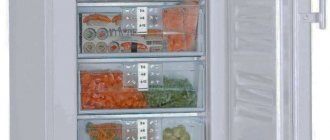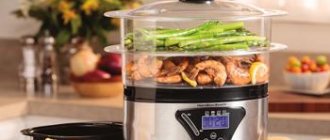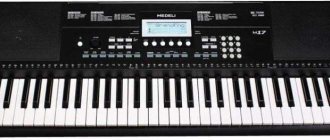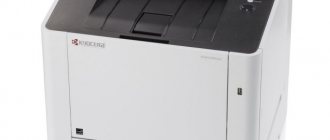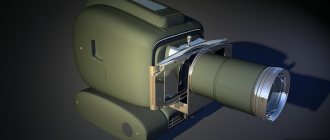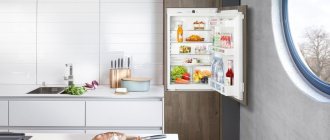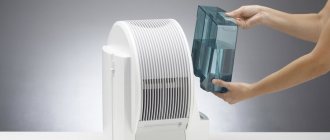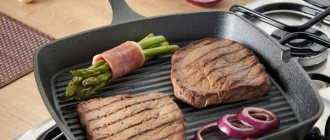Many families can no longer imagine the morning without the aroma of freshly baked bread with a golden crispy crust.
At the same time, it is not at all necessary to run to the bakery every day. You can make bread at home using a bread machine.
The device does not require special care, it is easy and pleasant to use . And models with expanded functionality allow you to make the family menu more diverse.
To choose a reliable and proven device, we suggest that you familiarize yourself with the most popular models in terms of price and quality.
The table contains models that have received the highest reviews on the Yandex.Market service.
| Place | Model | Price |
| Top 5 budget models under 5000 | ||
| #1 | Gorenje BM910WII | |
| #2 | Gorenje BM910W | |
| #3 | Galaxy GL2701 | |
| #4 | Midea BM-210BC-W | |
| #5 | ENDEVER MB-58/59 | |
| Top 5 at an average price of 5000-9000 | ||
| #1 | Morphy Richards 502001 | |
| #2 | REDMOND RBM-M1920 | |
| #3 | Midea BM-210BC-SS | |
| #4 | Gorenje BM1200BK | |
| #5 | REDMOND RBM-M1911 | |
| #6 | Philips HD9016 | |
| Top 7 premium class from 10,000 | ||
| #1 | Morphy Richards 502000 | |
| #2 | Oberhof Broter F4 | |
| #3 | Moulinex OW2101 Pain Dore | |
| #4 | Panasonic SD-2510 | |
| #5 | Moulinex OW240E Pain and Delices | |
| #6 | Panasonic SD-ZB2502 | |
| #7 | Moulinex OW250132 Pain & Tresors | |
Page navigation:
The main parameters on the basis of which the choice is made
Before making a choice and purchase, experts advise paying attention to the technical characteristics of the device and its functionality.
This will allow you to purchase a device that best suits your needs.
Finished loaf size and weight
Keep in mind! Modern appliances can bake bread weighing from 0.4 to 1.5 kg.
It is important to consider that it is recommended to eat homemade baked goods within 1-2 days, because they go stale faster than bread bought in a supermarket.
Therefore, it is worth choosing an oven of such a volume that the whole family can eat a loaf in 2 days . You can focus on general recommendations:
- for 1-2 people, 500-750 g of finished product is enough;
- a family of 3-4 people needs a loaf weighing 800-1300 g;
- for four people an average of 1.5 kg of bread is required.
Bread shape
Some prefer traditionally shaped loaves, while others prefer loaves.
The bread can be round or square, elongated in length or in height - the shape option depends on the model of the device.
What is the baking dish made of?
Most units have a removable form with 1-2 blades for kneading dough . But on sale you can also find models with a built-in form.
Naturally, using the first option is much more convenient - the bowl can be washed under the tap, and it will be easier to remove the bread.
It is worth noting! The material of the form also matters. In an aluminum container, the crust of the loaves is lighter and thinner than in a cast iron one.
To prevent the dough from sticking to the walls and to mix evenly, a non-stick coating is necessary.
The surface of the bowl should be smooth and even, without bumps or scratches.
It is the wear of the bowl that is the main cause of malfunctions in the bread machine.
Therefore, it is worth making sure that a spare form can be ordered from a service center or spare parts store.
Number of programs
For those who plan to use the oven exclusively for baking bread and muffins, there is no point in purchasing the latest models.
After all, the cost of equipment is directly proportional to its functionality.
And vice versa: those who expect that equipment will understand its owner perfectly and produce results worthy of gourmet praise are unlikely to be impressed by the basic versions of bread makers.
Need to know! The main programs are designed for baking different types of bread: rye, wheat, yeast-free, whole grain, gluten-free, sweet, with additives.
In addition, most devices have at least one program for kneading yeast dough, as well as a mode for baking muffins and yeast-free bread.
Modern models are distinguished by the presence of the following programs:
- kneading pizza dough;
- kneading pasta dough;
- kneading yeast-free dough;
- cooking porridge;
- stewing;
- jam and preserves;
- yogurt and other fermented milk products;
- pilaf;
- soups.
Device power
The power of the bread machine can vary from 450 to 1600 W. The higher this parameter, the faster the bread will bake.
For users who do not plan to prepare large-volume baked goods and are willing to wait more than 3-4 hours, a standard model with a power of 500 to 750 W is suitable.
Important! Those who purchase an oven with wide functionality and expect to bake bread quickly need a device with a power of at least 800 W.
In this case, the loaf will be ready no later than in 3 hours.
Availability of dispenser
A dispenser is a container in a bread machine that holds additional ingredients, such as nuts or spices.
At a certain point they are added to the dough automatically or manually.
Housing material
Budget models are mainly made of inexpensive and lightweight plastic.
The body of expensive bread makers is made of more durable metal.
This technique looks solid, but fingerprints and stains from drops remain on its smooth walls.
Availability of removable cover
Some models have the ability to remove the cover. This makes it easier to clean the inside of the device.
Noise level
You should know! During kneading and kneading the dough, the device can make quite a lot of noise.
To ensure that the operation of the device does not disturb the peace of family members, you should make sure that the noise level does not exceed 55-60 dB.
Control system
Most devices have a mechanical (push-button) control system.
It is considered the most reliable.
But touch panels also have their advantages. They are convenient and easy to clean from drops of grease and other contaminants.
When choosing a bread maker with a touch panel, you should make sure that it can be locked.
Otherwise, a child or pet will be able to turn on the equipment or reset the settings with one touch.
The control panel can be monochrome or backlit . Using the latter option is much more comfortable.
Material and design
When choosing the material and appearance of the case, you should be guided by personal preferences and financial capabilities. These indicators do not affect the quality of cooking bread and other dishes. Stainless steel appliances look better in the kitchen interior - but they weigh more and are more expensive. Fingerprints remain on the steel. Plastic cases are much lighter, easier to maintain and more affordable. However, plastic is more fragile, scratches more easily, and sometimes acquires a yellowish tint.
You can find and buy models with a rounded body, or devices that are more elongated in length or height. The height and diameter should be selected depending on the place where the bread maker will stand most of the time. In addition, it is better for lovers of French baguettes to focus on ovens that are elongated along the length. It is advisable to pay attention to the size of the cord, which may differ for different models - a long cable will allow you to do without the use of an extension cord.
Another important point is the presence of a handle for transportation. A bread maker is not the lightest home appliance, and if you intend to store it in a cabinet, choose models with a handle. Options without a handle are suitable when the stove is on a work table and there is no need to move it. Here is a very simple, compact bread maker that is easy to carry.
Additional functions
Reference! Modern devices can be equipped with the following functions:
- Timer. Allows you to delay the launch of a program for a certain time. It should be borne in mind that perishable products such as eggs, milk, etc. may become unusable if stored in a warm place for a long time. It is also necessary to exclude contact of yeast with granulated sugar and liquids.
- Maintain temperature to keep freshly baked bread warm.
- Choice of crust color. Adjust the degree of baking based on individual preferences.
- Wholemeal bread. The duration of this program is increased to give the dense wholemeal flour dough time to rise and bake well. This type of baking is considered to be the healthiest.
- Jam. An additional function that allows you to make jam or preserves. It’s convenient that you don’t need to waste time mixing the product.
- User mode. The ability to independently adjust baking parameters and enter them into the device’s memory. In the future, access to the created program is carried out by pressing one button.
- Child lock. This function can be implemented in various ways. In some cases the lid is blocked, and in others the control panel is blocked.
How to choose a bread machine for your home: expert advice
Tips for choosing a bread machine
Having familiarized yourself with the types of ovens and available functionality, you can begin to study the question of which bread machine is best to choose for your home. Basic criteria for choosing a bread maker:
- Optimal bowl volume . Small kitchen appliances are capable of preparing 0.5 kg of bread in one cycle, larger ones are no less than 1.5 kg. For a large family, of course, it is better to take a device with a large bowl.
- A set of necessary functions and programs . Each program contains a certain temperature and time regime, a hanging cycle, etc. Budget models, as a rule, have no more than 10 programs.
Price categories
Keep in mind! You can find both expensive and budget bread makers on sale.
There are three price categories :
- From 2500 to 6000. Copes with basic functions - kneading and proofing dough, baking bakery products.
- From 6000 to 8000. They have functions such as delayed start, regulation of the degree of browning of the crust, and accelerated cooking. In addition, the devices allow you to produce homemade yoghurts from milk and sourdough, and berry jams.
- From 8000. Such equipment is mainly used for commercial purposes. High power allows you to speed up bread production, and wide functionality opens up opportunities for experimentation.
Bread machine selection options
The size and weight of the finished loaf is what you should think about first. How many people are you planning to feed and how quickly will you finish one loaf? The fact is that different bread machines can bake bread weighing from 400 grams to 1.5 kg. But homemade bread goes stale faster than store-bought bread and it is advisable to eat it within two days. Therefore, when choosing a “stove”, be guided by the weight of the finished product that your family will eat in two days.
Form. Some people like “bricks”, some like loaves, others just want it to be tasty. If you care, the shape of the baking pan is another important parameter when choosing a bread machine.
Price. Of course, the atmosphere in the house created by the smell of freshly baked bread is priceless. But we still divided all the devices into several categories:
- from 2 to 6 thousand rubles - simple and reliable ovens that perform well the basic functions of kneading dough and baking bread;
- from 6 to 10 thousand rubles - more advanced “gadgets” with functions such as delayed start, golden brown crust, etc. You can also make homemade yoghurts and berry jams in bread makers in this price category.
- from 10 thousand rubles - high-power multifunctional devices, which are often used for commercial purposes for quickly preparing large quantities of baked goods.
Power
When answering the question “How to choose a bread machine,” expert advice always touches on the power of the device. It can vary in the range from 450 to 1600W. The higher the power, the faster the loaf will bake. The more functions a device has, the higher the power required. So, if you plan to use the delayed start function and keep the finished bread hot, choose a bread machine with a power of at least 800W.
Top bakery companies
Panasonic
- Panasonic SD-2501WTS;
- Panasonic SD-ZB2512;
- Panasonic SD-2510;
- Panasonic SD-ZB2502;
- Panasonic SD-2511.
Moulinex
- Moulinex OW2101 Pain Dore;
- Moulinex OW240E Pain and Delices;
- Moulinex OW250132 Pain & Tresors;
- Moulinex OW251E32 Pain & Tresors Maison;
- Moulinex OW2208 Pain Plaisir.
Redmond
- REDMOND RBM-M1920;
- REDMOND RBM-1908;
- REDMOND RBM-M1911;
- REDMOND RBM-M1910;
- REDMOND RBM-M1919.
Scarlett
- Scarlett SC-BM40003;
- Scarlett SC-401;
- Scarlett SC-400;
- Scarlett SC-BM40002;
- Scarlett IS-525.
Supra
- SUPRA BMS-150;
- SUPRA BMS-230;
- SUPRA BMS-350;
- SUPRA BMS-240;
- SUPRA BMS-270.
See our current rating of bread makers at the link.
Criterias of choice
To choose a bread maker for your home, you need to answer the question: what do you want to cook in it. After all, advanced functionality or good power will imply a higher cost. If you just want to add ingredients in the evening and use a timer to get warm bread with a crispy crust in the morning, then you just need to purchase a simple device with a delayed start.
There are basic parameters for uninterrupted and durable operation of the unit.
Weight and shape of finished bread
The maximum weight and volume of the loaf is directly related to the size of the oven. Bread makers offer small, medium and large volumes. Accordingly, you need to take into account how much bread each family member will eat so that it does not turn into crackers in 2-3 days. The minimum loaf volume is 400 grams, the maximum volume reaches one and a half kilograms.
On a note! The loaf can be rectangular, round, elongated for a baguette, or small if the shape can be divided into compartments. There are special insert containers for French loaves.
Mold material
This characteristic can be considered key for the longevity of the stove . Moreover, when deciding which bread machine to choose, the main attention should be paid to the material of the internal shape. It is this that will be subjected to regular strength testing at high temperatures.
Of course, bread machine buckets are made of metal, but the thickness and quality will vary between models. It is also important to check the composition of the non-stick coating by examining the characteristics stated by the manufacturer. A thin layer can not only be damaged when separating the finished bread or mixing jam with sharp instruments, but also simply burn out in a short time.
Advice! Take a closer look at the mechanism for attaching the spatula; it should not have gaps into which liquid from dough or soup will get in. Otherwise, the working oil seal will quickly become unusable, and the unit will become useless.
It is better to buy a high-quality metal mold with a reliable mechanism, since the money spent will pay for itself over many years of work without repairs.
Number of programs
The selection of bread machine options is a purely individual matter. If you are not going to make exotic bread with raisins or without yeast, then paying for extra bells and whistles doesn’t make much sense.
The best kitchen appliance designers often build similar modes into different recipes that are easy to control. Then the taste of the finished bun or dough will depend on the set of ingredients, and not on the choice of one program or another. Of course, the program for soup or porridge will be different from baking bread. But options for making loaves of different color and taste will take approximately the same time to prepare if you select the same options.
As a rule, when baking, the size, color of the crust (dark or light), and the addition of additives (the presence of an automatic dispenser that does not interrupt the process of kneading the dough) are important.
Advice! To choose a good bread maker, it is useful to study how the programs work. If they exceed ten for each dish, this will not only complicate use, but will also make many of them unclaimed.
Power
The power of the heating elements affects the cooking time of the finished baked goods. This parameter does not affect the dough, since a little heat is enough to raise the yeast dough.
High power is interesting in the case of regular cooking of large quantities of bread, for example, in a small private bakery. But each loaf will require from 3 to 5 hours, and it will not be possible to significantly reduce the time with a good, expensive heater. Perhaps the gain of one cycle will be from half an hour to 40 minutes.
If you choose a bread maker for your home with a power of 500 to 750 W, then this will be enough for daily cooking of bread (3-4 hours depending on the recipe), stewing (no more than 2 hours) and making soup (from 1 to 1.5 hours). When on the same day the load increases to maximum for preparing morning porridge, another hour is added. Thus, a home bread maker can easily work for almost half a day, taking into account overnight kneading.
The best time to check whether you have chosen the right bread machine is before Easter, when you simultaneously bake sweet cakes with raisins using yeast, as well as knead different types of dough for buns and cheesecakes, including curd mixtures.
If the assistant has coped with the workload for the holiday, then she will cope with weekdays jokingly.
Devices with a maximum power setting of 1650 W are designed for heavy loads and are suitable for a mini-bakery, as they will cook several loaves a day every 3 hours.
Mixing spatula
On sale you can find options with one or two blades. Each of them is not without its shortcomings.
- If one spatula is installed, then it simply may not reach the corners of the working pan, the ingredients will not be completely mixed, which will ultimately lead to poor-quality baking.
- Two blades do a better job of mixing, but only when the bucket is fully loaded. In addition, such models are more prone to breakdowns.
Advice! Therefore, when choosing the number of blades, it is better to focus on real customer reviews about a specific bread machine model.
If we talk about the materials used, then in the budget segment plastic is used to make blades, while more expensive models offer metal. In addition, additional blades may be present for different types of dough.
Additional options
Functions that are not typical for a classic oven cause fierce debate between owners of multicookers and bread makers. After all, pilaf or yogurt is obtained differently in each of them. Moreover, it is recommended to open the bread maker during operation only in extreme cases. It is difficult to objectively evaluate a leader in the quality of cooking, but if the house already has a good multi-cooker, then an oven with similar functions will be a clear overkill.
Despite this, in the best models, in addition to bread, you can cook the following unusual dishes:
- soups;
- porridge;
- stew;
- jams or preserves.
And, of course, baked goods, which will surpass the microwave and multicooker in quality.
Additional functions when choosing a bread machine, in addition to recipes, can be:
- timer with delayed start and keep warm (allows you to place all the ingredients in the evening and get warm bread for breakfast in the morning);
- protection from children;
- restoring an interrupted program in the event of a power outage;
- removable lid for easy cleaning;
- choice of crust color and loaf shape;
- number of bread and dough options for which you can set modes;
- multicooker for creating your own culinary masterpieces;
- the option of not using flour for people with gluten allergies.
Important! The presence of a dispenser is necessary for automatically adding additional ingredients during the baking process, such as raisins, dried fruits, grated cheese, etc. If these products are poured directly into the dough, it may not rise.
For some, these features will seem unnecessary, but for others, this will be the most important factor for the purchase.
Operating principle and design of bread makers
A bread maker is a small-sized household electrical device designed for home cooking of various types of bread. Bread makers are distinguished by a fully automated process and compact dimensions, even if we are talking about large models.
This household appliance is equipped with modern mechanisms that allow you to perform a lot of tasks. One of the main elements is a heating element that heats the chamber, and a temperature sensor that monitors the temperature.
Bread makers differ in power, volume, functionality, number of built-in programs, etc.
The standard model consists of the following elements:
1. Housing or otherwise baking chamber
Inside it there is an element that produces heating, as well as a shaft with blades that kneads the dough, and other mechanisms responsible for ensuring the correct operation of the device.
2. Bucket (baking dishes)
In most cases, it is removable and has a non-stick coating. It is a container in which all the necessary products are placed.
3. Lids
Closes the bread maker during cooking. It has a special viewing window built into it.
4. Control panels
It is usually located in the central or lower part of the body.
Electric bread machines, as a rule, bake products with a maximum weight of up to 2 kg. The process takes from one to six hours. Tin bread is the slowest to prepare.
A product produced independently certainly differs in aromatic, taste and quality characteristics. It contains no food or other additives used in mass production.
